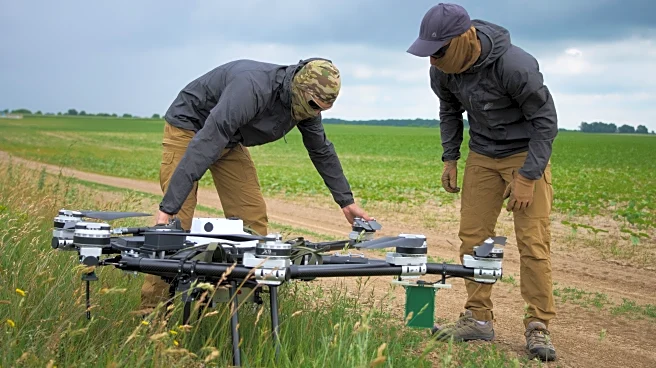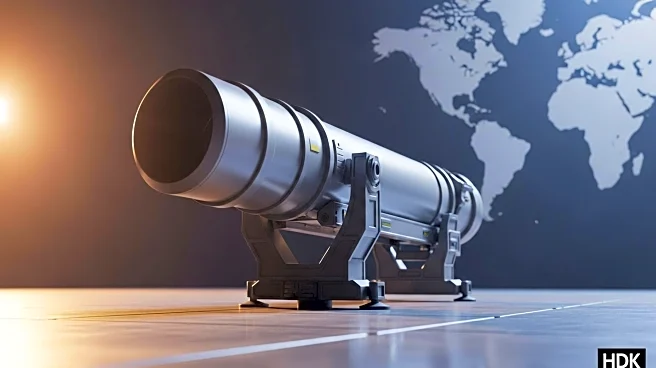What's Happening?
The Ukrainian army is increasingly deploying remote-controlled vehicles, referred to as 'robots on wheels,' to perform various battlefield tasks amid a shortage of soldiers. These vehicles, resembling miniature tanks, are used to ferry supplies, clear mines, and evacuate the wounded or dead. The deployment of these vehicles is a response to the ongoing conflict with Russia, which has persisted for over three and a half years. The vehicles are primarily produced by Ukrainian companies and vary in cost based on their capabilities. The use of such technology is not new, with historical precedents in World War II and modern adaptations by countries like the U.S., Israel, and China. However, Ukraine's extensive use of these vehicles is notable and could lead to further advancements.
Why It's Important?
The use of remote-controlled vehicles by the Ukrainian army highlights a significant shift in military tactics, emphasizing the role of technology in modern warfare. This development could influence military strategies globally, as other nations may adopt similar technologies to enhance their operational capabilities. The ability to perform dangerous tasks remotely reduces the risk to human soldiers, potentially saving lives and resources. Additionally, the economic implications are significant, as the production and deployment of these vehicles could stimulate technological innovation and manufacturing within Ukraine. However, the cost and vulnerability of these vehicles remain challenges that need to be addressed.
What's Next?
As the conflict continues, the Ukrainian army is likely to expand the use of remote-controlled vehicles, integrating them further into their military operations. This could lead to increased investment in research and development to improve the vehicles' capabilities and reduce their vulnerabilities. The international community, particularly military organizations, may closely monitor Ukraine's use of this technology to assess its effectiveness and potential applications in other conflicts. The ongoing war provides real-time feedback that could drive rapid advancements in military technology.











